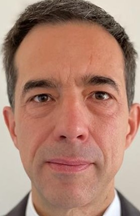How ePM will help EDF drive performance across its entire fleet
Features
Vol 32 No 2 2022
9 December 2022
Francois Wienhold explains to Inside WANO how EDF will maximise the value of ePM across its fleet in France
 Enhanced Performance Monitoring (ePM) delivers added value for the EDF fleet. It provides external feedback about station performance with continuous monitoring and in-depth analysis. The direct interaction between station management and WANO experts is an opportunity to share best practices and receive coaching and training.
Enhanced Performance Monitoring (ePM) delivers added value for the EDF fleet. It provides external feedback about station performance with continuous monitoring and in-depth analysis. The direct interaction between station management and WANO experts is an opportunity to share best practices and receive coaching and training.
It is an opportunity for each station to be challenged with an external perspective on the effectiveness of their actions plan to improve performance. It is also a chance for us to receive support from WANO to close gaps. It is a new of way of working with WANO.
Before starting the implementation, we identified some risks:
- Generalising this new approach without considering the learnings.
- Having different ways of implementing the process on the stations; it could be the case as ePM is deployed at the station level by WANO.
- Adding another layer of complexity in the interactions between the stations and the corporate level - without giving a real place to this new way of working with WANO.
- Having uncoordinated approaches between corporate strategic initiatives and WANO feedback to the stations.
- Underestimating the workload.
I will share how we will address these risks. Our first choice is a step-by-step approach for ePM implementation. The first wave was to implement ePM on a single station, Chooz nuclear power plant in 2021. The second wave is to implement the new approach on four stations in 2022; the objective is to test a multiple implementation in a fleet and to build a modular approach to implement it in different stations. For the future implementation, we have set a roadmap based on the peer review schedule, but which takes also into account the outage programme and the performances of the stations. Our objective is to learn and to improve at each step.
The second choice is to start ePM after a peer review. This is the best choice as peer reviews provide a shared picture of the station. ePM can then help the station in defining its improvement plan after a peer review. The rules are the same for every station. This approach can be repeated to promote learning and a consistent process with the corporate entity.
The third choice is to coordinate the implementation of e-PM indicators across the fleet. We have started using the e-PM indicators at Chooz and it took several months to clarify the definition of ePM indicators with WANO. The good news is that 80% of the ePM indicators are close to EDF performance indicators but when we looked in the details, some definitions are not the same and transpositions are needed. There is a risk of a double reporting for EDF and ePM indicators, which would not be appropriate. That’s why, we have set a working group including stations and corporate to seek for alignment of the EDF PIs with the ePM indicators for all the fleet.
These are the learnings from the first implementation at Chooz:
- The station director leadership is the key enabler for ePM implementation; the director from Chooz has set clear ambition to the station manager and she is very committed for the success of the relationship with WANO.
- A strong link developed between WANO experts and the station’s managers. The relationship is very different to a peer review; it enables teaching and coaching; the feedback is very positive.
- The cross functional approach offers a new point of view, complementary to the current approach of the station.
- Integrate ePM into the steering system of the station, into the short-term performance plan and the long-term strategic vision.
We have identified some conditions for success. The first one is the credibility of WANO functional leads. The profiles could be very different, and it is not an easy task for the WANO experts to provide relevant feedback to the managers. Trust and regular communication between WANO team and stations counterparts are essential to keep a common understanding of the situation. English language at the department manager level can be a challenge for some of them. The alignment on the diagnostic was quite an easy step for Chooz. The main expectation of the station was to get practical support actions from WANO at the right period for the station. That could be a challenge for WANO’s capability.
Finally, I would like to share some considerations about ePM contribution at the corporate level. It is a complementary approach for EDF corporate but a challenge to integrate. It is an opportunity for EDF corporate leaders to have a complementary picture of performances and there are regular discussions between the CNOs and WANO. Some gaps identified by ePM on a station can already be addressed in the existing improvement loop of the company. There is the right balance to be found and a need consistency between corporate and WANO solutions. Implementing ePM in a large fleet need to have good interactions and coordination between the corporate level and WANO.
In conclusion, ePM implementation delivers added value for the station and a new way of working with WANO. To achieve sustained success, we need to test, learn, and integrate ePM into the improvement loop at station and corporate levels.